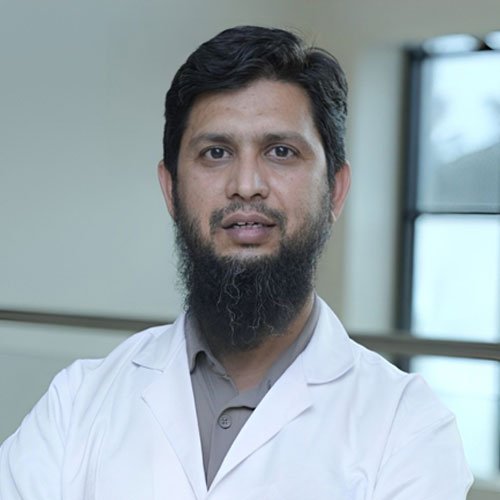Key Components of Orthopedic and Spine Surgery Facilities:
- State-of-the-art surgical suites with advanced equipment and technology to perform orthopedic and spine surgeries.
- Facilities typically include imaging services such as X-rays, CT scans, and MRI to aid in accurate diagnosis and treatment planning.
- We have outpatient clinics for non-surgical consultations, follow-up appointments, and conservative treatments.
- In-house physical therapy and rehabilitation services to support post-surgical recovery and enhance overall musculoskeletal health.
- Dedicated for specific orthopedic subspecialties, such as joint replacement, sports medicine, hand surgery, and spine surgery.
- Comprehensive preoperative assessments to ensure patients are medically fit for surgery and to optimize their overall health.
- Facilities may offer both inpatient and outpatient services, depending on the nature and complexity of the surgery.
Common Orthopedic and Spine Surgeries:
- Total Joint Replacement (Arthroplasty): Total joint replacement involves the surgical removal of a damaged joint and replacing it with an artificial implant. Common joints for replacement include the hip, knee, and shoulder.
- Spinal Fusion: Spinal fusion is a surgical procedure that involves joining two or more vertebrae to stabilize the spine. It is often performed to treat conditions such as degenerative disc disease, spinal deformities, or fractures.
- Laminectomy: Laminectomy is the surgical removal of the lamina, the back part of a vertebra. This procedure is typically done to relieve pressure on the spinal cord or nerves, often caused by conditions like spinal stenosis.
- Discectomy: Discectomy is the removal of a portion of a herniated or damaged intervertebral disc. This surgery aims to relieve pressure on spinal nerves and alleviate symptoms such as pain and numbness.
- Hip Resurfacing: Hip resurfacing involves replacing the damaged surface of the hip joint with a metal implant. It is an alternative to total hip replacement and is often considered for younger, more active patients.
- ACL Reconstruction: ACL (Anterior Cruciate Ligament) reconstruction is a surgical procedure to replace a torn ACL in the knee. This is common in individuals who have experienced sports-related injuries.
- Rotator Cuff Repair: Rotator cuff repair is a surgical procedure to mend torn tendons in the shoulder. It is often performed arthroscopically and is common in cases of rotator cuff injuries.
- Spinal Disc Replacement: Spinal disc replacement involves replacing a damaged or degenerated intervertebral disc with an artificial disc. This procedure aims to maintain motion in the spine while alleviating pain.
- Carpal Tunnel Release: Carpal tunnel release is a surgical procedure to relieve pressure on the median nerve in the wrist. It is commonly done to treat carpal tunnel syndrome and alleviate symptoms like numbness and tingling.
- Kyphoplasty/Vertebroplasty: Kyphoplasty and vertebroplasty are minimally invasive procedures to treat vertebral compression fractures. These involve injecting bone cement into the fractured vertebra to stabilize and alleviate pain.
These surgeries should be discussed thoroughly with an orthopedic surgeon, and the decision to undergo a specific procedure is based on individual health conditions and needs.
Doctors

Dr. Nawaid Ahmed
Orthopedic Specialist | Arthroscopy | Joint Replacement | Sports Injury Treatment | Joint Preservation & Reconstruction
Read moreFrequently Asked Questions(FAQ’s)
What orthopedic and spine surgeries are offered at Synergy Hospital?
Synergy Hospital provides a comprehensive range of orthopedic and spine surgeries, including total joint replacements (hip, knee, shoulder), spinal fusion, laminectomy, discectomy, hip resurfacing, ACL reconstruction, rotator cuff repair, spinal disc replacement, carpal tunnel release, and kyphoplasty/vertebroplasty. These procedures aim to alleviate pain, restore function, and improve the quality of life for patients with musculoskeletal and spinal conditions.
Who are the orthopedic and spine specialists at Synergy Hospital?
The department is led by Dr. Mohammed Faizan, an orthopedic and spine surgeon with over 23 years of experience, specializing in minimally invasive spine surgery, joint replacements, and advanced orthopedic procedures. Dr. Nawaid Ahmed, with over 21 years of experience, specializes in arthroscopy, joint replacement, sports injury treatment, and joint preservation & reconstruction.
What are the benefits of choosing Synergy Hospital for orthopedic and spine surgeries?
Patients benefit from state-of-the-art surgical suites equipped with advanced technology, comprehensive preoperative assessments, in-house rehabilitation services, dedicated subspecialties for joint replacement, sports medicine, hand surgery, and spine surgery, as well as personalized inpatient and outpatient care. This integrated approach helps ensure optimal surgical outcomes and patient satisfaction.
How can I schedule a consultation or surgery at Synergy Hospital?
Appointments can be scheduled by calling the OPD at 9561273980, emailing synergyhospitalnagpur@gmail.com, or using the hospital’s online booking form. The hospital staff will assist you in setting up a consultation with one of our orthopedic and spine specialists.
Are there any risks associated with orthopedic and spine surgeries?
While these surgeries are generally safe, potential risks include infection, nerve injury, bleeding, blood clots, and anesthesia complications. Your surgeon will discuss these risks and take steps to minimize them, ensuring the safest possible outcome.




.svg)
.svg)



